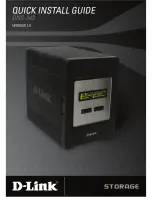
INS_CNGE28FX4TX24MS(2,POE2/48)
04/30/18 PAGE 22
INSTALLATION AND OPERATION MANUAL
CNGE28FX4TX24MS(2,POE2/48)
TECH SUPPORT: 1.888.678.9427
2.9. Power Supply Installation
2.9.1 Overview
Power down and disconnect the power cord before servicing or wiring the switch.
»
Do not disconnect modules or cabling unless the power is first switched off.
»
The device only supports the voltage outlined in the type plate. Do not use any other power
components except those specifically designated for the switch device.
»
Disconnect the power cord before installation or cable wiring.
The switches can be powered by using the same DC source used to power other devices. A DC
voltage range of 12 to 48 VDC (Non PoE) or 48 VDC (PoE) must be applied between the V1+
terminal and the V1- terminal (PW1), see the following illustrations. A Class 2 power supply is
required to maintain a UL60950 panel listing. The chassis ground screw terminal should be tied to
the panel or chassis ground. A redundant power configuration is supported through a secondary
power supply unit to reduce network down time as a result of power loss.
Dual power inputs are supported and allow you to connect a backup power source.
Single DC Power Redundant DC Power
P2 P1
Chassis
GND
(pane)
One DC Supply
Dual DC Supplies
Chassis
GND
(pane)
P2 P1
Figure 2-12. Power Wiring for Managed Ethernet Switch
2.9.2 Considerations
Take into consideration the following guidelines before wiring the device:
»
The Terminal Block (CN1) is suitable for 12-24 AWG (3.31-0.205 mm
2
). Torque value 7 lb/in.
»
The cross sectional area of the earthing conductors shall be at least 3.331 mm
2
.
»
Calculate the maximum possible current for each power and common wire. Make sure the
power draw is within limits of local electrical code regulations.
»
For best practices, route wiring for power and devices on separate paths.
»
Do not bundle together wiring with similar electrical characteristics.
»
Make sure to separate input and output wiring.
»
Label all wiring and cabling to the various devices for more effective management and
servicing.
Routing communications and power wiring through the same conduit may cause signal
interference. To avoid interference and signal degradation, route power and communications
wires through separate conduits.
















































